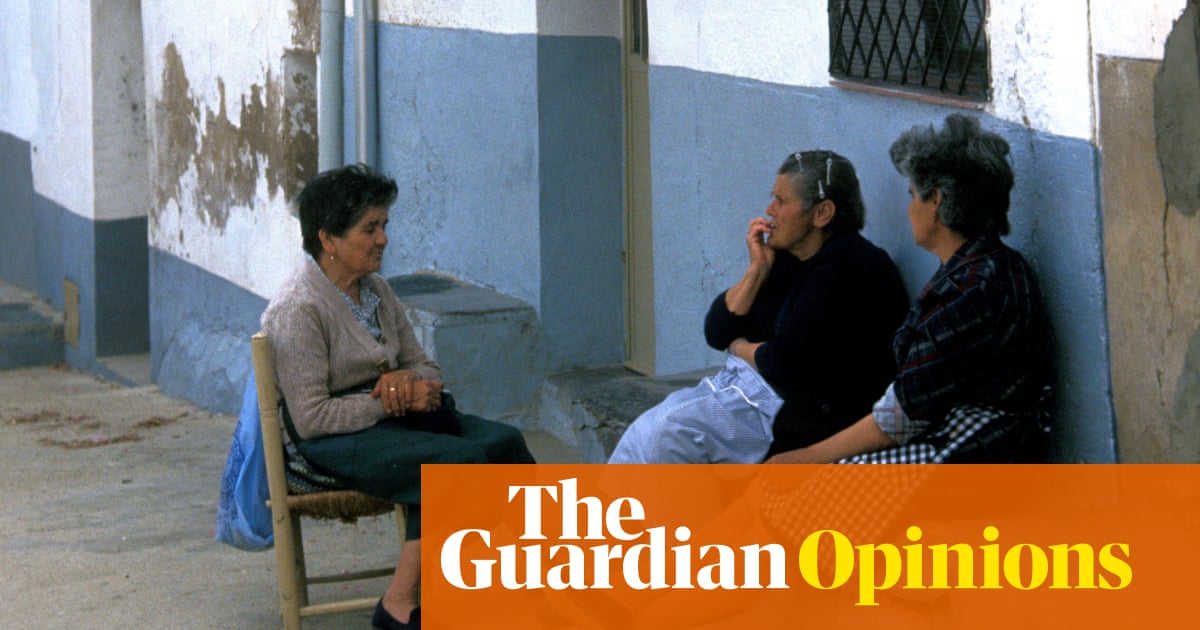The mayor of a small town in southern Spain felt compelled, a few days ago, to clarify that there isno new municipal banon older women sitting out on the pavement in their own chairs. He was responding to a furious online backlash directed mostly at the town’s police after they posted a message on social media urging the residents of Santa Fe to show “civility” by not sitting in the streets in the late hours disturbing neighbours.
This plea for respect for the public space was hardly a draconian law and order crackdown: it was a reasonably worded reminder. “We know that putting chairs or tables outside the door is a tradition in many towns,” it said, “but public spaces are regulated. If the police ask you to remove them, do so out of respect and in the interests of coexistence.”
Unfortunately for the police, it was accompanied by a photograph not of 3am revellers or anyone engaging in antisocial behaviour, but six older women sitting outdoors on plastic garden chairs, enjoying what looks like a peaceful chat. The angry reaction (“Go and arrest drug dealers!”, or “All these women want is a quiet moment with their neighbours. Why don’t you take care of real crimes!”) was a reminder that inSpain, the authorities mess with community rituals involving older people at their peril.
Perhaps the reaction also betrayed a sadness that the custom of sitting outdoors chatting, still practised in villages and some small towns, especially in the hottest months, is slowly fading as rural Spain becomesincreasingly depopulated.
In cities, you certainly don’t see women or anyone else putting their own chairs on the pavement outside their front doors. But the routine of outdoor conversation and intergenerational use of public space is very much alive.
Sitting and talking in public spaces is a tradition that dates back centuries and is closely intertwined with the history of women’s rights in Spain. Women’s search forindependence and common spacesto talk outside the home can be traced to the middle ages – from separate bourgeois parlours to artisan work conducted outdoors. And it was not confined to regions with warmer weather.
In León, a province in north-west Spain, people once gathered around the fireplace on bleak midwinter nights for thefilandón, a session of storytelling named after the spinners who worked together while exchanging tales. This cherished oral tradition is now beingrevived in León, with local novelists holding events in nature reserves such as Babia, passing the filandóndown to a new generation. In some villages in northern La Rioja, you still see women chatting as they sew espadrilles outside their shopfronts.
It is only natural in the digital age that such ways of living and communing fade, but there is still a strong appreciation in Spain for the value of a neighbourly gathering, wherever it happens. In cities, it might take place in the lobby of an apartment building, often around the doorman. In mine, I find comfort in seeing the same older women and men, often with a dog in their midst, sitting on a bench by the mailbox almost every day. The daily chatter proved very useful during therecent blackout, as neighbours readily shared tips, food and information. One of the regulars is a retired engineer who once worked for a major power company, and he gave us the clearest explanation of how the outrage would be resolved.
In town squares, it’s common to see people of all ages sitting and chatting in the same space. Older women on the public benches, children running around them, teenagers kicking a football, all together and not necessarily drinking, as is often the case elsewhere. Summer heatwaves make late-evening gatherings outdoors a natural form of relief. Stepping outside for no particular purpose is often calledtomando el fresco(“taking the breeze”, if you are lucky to catch it).
In the biggest Spanish cities, newly pedestrianised areas offer convivial shared outdoor spaces all year round. More modest thanBarcelona’s superblocks, the newly refurbished and pedestrianisedOlavide Squarein central Madrid, for example, has become a model of the ideal public space. It has teenagers playing ping pong, kids and dogs running about, people of all ages reading or scrolling on their phones in deckchairs, occasionally browsing from a public library stand, and of course older women deep in conversation until late. Even in shabbier squares, people of all generations still gather in proximity with ease.
What is changing is that Madrid’s conservative local government is increasingly promoting a privatised model of public space, with extended restaurant and bar terraces occupying most of the pavements, leaving little space for people to gather without being obliged to consume something.
Respecting public space, as the Santa Fe police requested, means keeping it truly public. And that is key to fostering conversation not just with friends, but with neighbours, casual acquaintances and strangers.
Conversation in public, shared spaces has a special power in these polarised, lonely, even dehumanising times. A sense of community requires much more than a few chairs on the pavement, but it is a good place to start.
María Ramírez is a journalist and the deputy managing editor of elDiario.es, a news outlet in Spain
